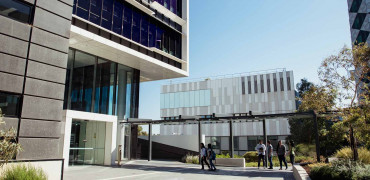With multiple schemes supporting the decarbonisation of university campuses, many are adopting heat pump technology to replace outdated gas or oil boilers.
These new technologies provide cleaner, more efficient heat and directly contribute to a university’s Net Zero goals.
One of the many benefits of heat pump technology is that today’s units are highly flexible and can deliver low-carbon heating and hot water up to 90oC, even in high-use areas such as campus leisure centres.
In most cases, we can confidently say that a heat pump can replace the gas boiler with no loss of performance or impact on occupant comfort.
However, when selecting HVAC equipment for a new-build or refurbishment project, it’s crucial to consider the buildings’ heating, hot water, cooling, and ventilation needs as a system.
Taking an overall view of the building services makes for better building performance and highlights potential opportunities for greater energy or carbon savings.
So rather than simply replacing a boiler with a heat pump, it may be possible to identify ways of using the technology that make full use of its benefits.
A system-thinking approach can help identify opportunities for applying renewable technology that may not seem obvious
Low to high temperature heat
One way to do this is to use heat pumps to transform low-temperature heat into high-temperature outputs. For example, an air source heat pump can produce low-temperature water (25oC to 55oC), which provides energy for a water source heat pump (WSHP) that delivers high-temperature hot water of 75oC and above.
This concept is applied in Mitsubishi Electric’s Integra range of 4-pipe heat recovery chillers.
In this system, chillers can provide cooling to the building, while the rejected heat is used as an energy source, for example, to the EW-HT water-to-water heat pump to produce hot water up to 78oC.
It can be an ideal way to remove heat from one building on campus and use it in another – effectively making heat produced on-site a source of ‘free’ energy.
Avoiding hot spots
Taking this approach further, heat pumps can also be the heat source for a low temperature heat network.
These are considered essential technology for decarbonising heating, and the government supports their adoption with grants.
Unlike old-fashioned heat networks that rely on fossil fuel gas boilers to provide the heat source, modern low-temperature systems (known as ambient heat networks) rely on heat pumps.
Rather than using an energy centre that pushes heat out, ambient heat networks (or heat loops, as they are also known) circulate low-temperature water around an ambient energy loop. Temperatures are between 10oC and 30oC.
Each building or apartment on the loop has a heat pump which produces domestic hot water and space heating.
The low-temperature approach also eliminates distribution heat losses and building overheating, often seen in traditional heat networks. And the ability to use heat recovery enhances energy efficiency and carbon savings further.
Energy efficient ventilation
And the principle of using heat as an energy source for the whole system can be applied in other ways. One example is mechanical ventilation with heat recovery (MVHR) which re-uses ‘waste’ heat extracted from buildings that would otherwise be wasted.
This is particularly useful in environments where ventilation is being used to support occupant health and comfort.
Universities have tended to increase ventilation rates in areas such as lecture theatres, but in pursuing better indoor environments, higher ventilation rates per person and square metre of floor area can mean greater energy use.
MVHR can recover up to 90% of heat from outgoing air, which can be used to pre-heat incoming air – reducing the need for heating and lowering energy costs.
Energy saving comfort
With many UK universities now targeting Net Zero for their campuses, the performance of HVAC systems should be under intense scrutiny.
However, a system-thinking approach can help identify opportunities for applying technology, such as heat pumps, in ways that may not seem immediately obvious.
As a manufacturer and supplier of energy efficient HVAC and renewable systems, we have worked with many university engineering teams to help them design and deliver the best systems for their campuses.
These are designed specifically to save energy and carbon and ensure comfortable and productive environments for all occupants, whatever the building type.
Mike Egan, Business Development Manager




